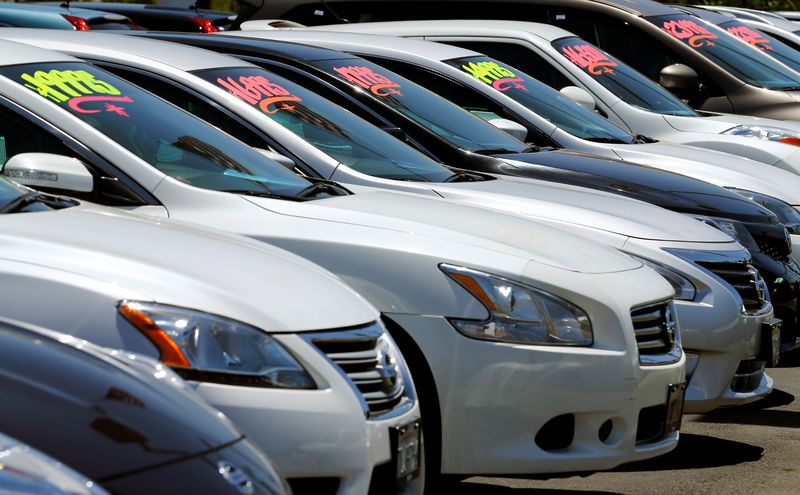By Bernie Woodall
DETROIT (Reuters) - U.S. auto sales fell 4.2 percent in August as some major automakers said a long-expected decline due to softer consumer demand had begun, possibly sparking a shift to juicer customer incentives and slower production.
The top three sellers, General Motors Co (N:GM), Ford Motor Co (N:F) and Toyota Motor Corp (T:7203) (N:TM) on Thursday reported declines of at least 5 percent.
Of the seven top manufacturers by sales, only Fiat Chrysler Automobiles (N:FCAU) (MI:FCHA) reported a gain versus a year ago, when sales were restated to about 11,000 fewer than originally reported.
Monthly spending on new cars and trucks is closely watched as the U.S. auto industry accounts for about one-fifth of U.S. retail sales.
August sales, said Autodata Corp, totaled 1.51 million vehicles, or 16.98 million vehicles at a seasonally adjusted annualized rate, versus a surprisingly strong 17.88 million vehicles in July.
Ford Chief Economist Bryan Bezold said sales had hit a plateau after steadily rising following the 2008-2009 recession. The auto industry outperformed the overall U.S. economy in those years largely due to pent-up demand that has now played out, he said.
Wall Street has pressured automaker shares all year amid expectations of falling sales at some point.
GM shares dipped 0.4 percent while Ford was off 1.4 percent in afternoon trading. Fiat Chrysler dropped 1.2 percent in New York trading.
In late July, Ford was the first major automaker to confirm the lofty sales gains achieved since 2010 were at an end, even though they are still about 65 percent higher than the lowest sales year in 2009.
Mark LaNeve, Ford's U.S. sales chief, said on Thursday the company will ring up fewer sales in 2017 than this year. Results in 2016 are expected to fall short of last year's record high sales of 17.47 million vehicles, according to Autodata.
GM on Thursday forecast 2016 sales at 17.3 million vehicles.
Ford, whose sales tumbled 8.4 percent, said its U.S. inventory was at 81 days of supply versus 61 days a year earlier, suggesting Ford may have to cut production, increase profit-eroding incentives, or boost fleet sales.
"Now the automakers' focus will shift from simple growth to market share and managing inventories," said analyst Karl Brauer of Kelley Blue Book. "The use of incentives and fleet sales as a counter to plateauing retail sales will be the statistics to watch going forward.”
Ford's LaNeve said the company will manage supply with demand, but when asked if production will be slowed or plants shut down to accomplish that goal, he declined to say.
The trend toward SUVs and trucks and away from sedans and hatchbacks continued in August. Autodata figures show passenger car sales fell 12.6 percent while SUV and truck sales rose 2.4 percent.
While GM said this year's sales will not top results of 2015, the slide was moderate, and results remained sharply above those in the 2008-2009 recession and in the years immediately after.
“All the economic factors continue to point toward a strong second half of the year and another potential record year for the industry,” said Mustafa Mohatarem, GM’s chief economist.
Sales of the No. 1 selling model in the United States, the Ford F-Series pickup truck, fell 6 percent, but Ford said retail sales for the trucks were robust.
Retail sales cover individuals and are generally more lucrative than volume fleet sales to rental car agencies, businesses and government. Rental car sales are particularly low-profit.
GM has boasted all year that it has significantly cut its sales to rental agencies. However, GM's retail sales fell about 5 percent, in line with its wider total sales decline.
Fiat Chrysler said in July it has revised more than five years of monthly U.S. vehicle sales figures amid a U.S. investigation into claims of inflated figures.
Nissan Motor Co (T:7201) sales were off 6.5 percent, but its Rogue midsize SUV saw a rise of 19 percent.

Honda Motor Co (T:7267) was down 3.8 percent as Accord sales tumbled 26 percent. Honda-brand car sales fell 10 percent overall while truck and SUV sales rose 4.5 percent.